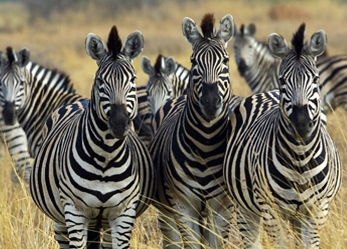Why Do Zebras Have Stripes?
It’s not easy to get over zebra. Once we saw it, it will be inside our brain for good. That’s because zebra is so recognizable. It’s the one and only animal on the planet with white and black stripes. The distinctive pattern goes all the way covering its entire body, from legs to hare. Why’s that? What does having black and white stripes do to zebra’s life?
Two leading scientist came up with Nature Selection theory have different opinion. According to Darwin, the stripes help zebra, both male and female, to decide their mating partner. While Wallace believed, the stripes was a camouflage. The black and white can confuse potential predators because it will blend into gray from distance.
So, for more than a century, five major hypotheses were developed over the zebra’s distinctive stripes pattern. They were to avoid instects, camouflage, to hide from predators, adjusting body temperature or to help zebra in social interaction. Recently, a group of scientist led by Professor Timothy Caro from University of California, Davis, US carried out the latest research about zebra. The result was submitted in Nature Communications journal, published on April 1st 2014. “We found again and again and again (that) the only factor which is highly associated with striping is to ban biting flies,” Tim convinced.
According to the team, the black and white stripes help zebra against the blood sucking tsetse fly. The fly was known to be a major threat for zebra. Not only the bites are painful, it’s also lethal. The fly can spread diseases and drain the zebra. The stripes pattern is believed to distract the flies vision, making them difficult to land on zebra. The idea that flies don’t like stripes is actually not a recent one. Since 1930, there have been several studies that support this theory. Based on the experiment, flies are known to choose to land on a plain white or black surface, instead of the stripes on zebra.
But the hypothesis was quickly denied by other scientist. Brenda Larison, a biologist from University of California, Los Angeles, doubted Tim and is team’s findings. According to her, it takes more specific research to arrive on the certain conclusion of what the black and white stripes on zebra for. “The story is likely to be much more complex, and this is unlikely to be the last word on the subject,” she insisted. Brenda is known to receive fund from National Geographic Society’s Committee for Research and Exploration to study the stripes on plain zebra.
HAFIDA INDRAWATI
PHOTOS: GETTY IMAGES


 Indonesia
Indonesia















